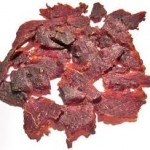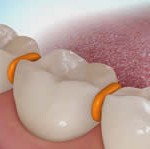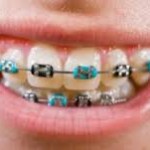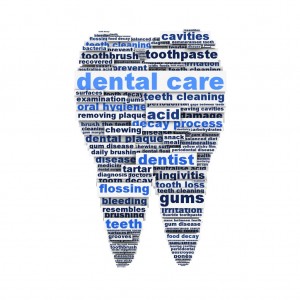April 26th, 2016
One of the first things Dr. Hughes will look for during a consultation of a teenager/pre-teen is the presence of primary (baby) teeth. If a thirteen year old still has baby teeth it may mean that the dental development is delayed or it could mean that something is not right. The 12-year-molars are a good indicator as to what exactly is going on. If the 12-year-molars have not erupted, chances are that development is just behind schedule. Another indicator is whether or not teeth are being lost in the appropriate sequence. If they are, it is likely that things are just delayed. However, if for example, one primary second molar remains and it isn’t loose and all of the others are gone with their replacements in, it may indicate an issue and warrant investigation.
In some cases the patient would benefit from having the primary teeth extracted and starting braces. There are several factors to consider when determining if the patient would benefit from extractions of baby teeth. The first is the patient’s age. If the patient is 14 or 15, Dr. Hughes will usually recommend having the baby teeth removed and starting braces in order to have the treatment finished before they graduate from high school. The formation of the roots of the un-erupted permanent teeth are considered. If the roots are 2/3 formed and the associated baby teeth are not loose, extractions are recommended. Another factor is the status of the 12-year-molars. If the 12-year-molars are erupted and baby teeth remain, Dr. Hughes will usually recommend extracting the primary teeth and starting the braces.

In general, starting treatment after all of the primary teeth are gone minimizes treatment time and reduces the chance of any negative effects of orthodontic treatment such as white spot lesions, puffy gums and root resorption. But there are some situations that would warrant starting braces when the patient still has baby teeth. For example, if a tooth has become impacted because there is not enough room for it to come in, we may make room for the underlying tooth with hopes that the baby tooth will become loose on its own. If it does not, we would then have the baby tooth removed by the patient’s dentist. Certain malocclusions may also benefit from starting treatment before all the baby teeth are gone. For example, in underbite cases we often start treatment before the lower baby molars are gone. Also, in large overbite cases it is ideal to start before the upper baby molars are lost. Also, if we are keeping a baby tooth because its underlying permanent tooth is missing, the remaining baby tooth will have no impact on when the braces should be started.
Many times we are told that patients had postponed their initial consultation because of the presence of baby teeth. In many cases this is OK. However, we do recommend coming in for a consultation even if there are some primary teeth left (especially if they have been hanging around for a while) in case one of the factors mentioned above are present.
March 29th, 2016
Miss gnawing on a stip of beef jerky now that your braces are on? Try Shredded Jerky Jumbles
2 oz. dried beef jerky
1 c boiling water
Cut the beef jerky into quarter-inch bits with a sharp knife. Put them in a large bowl and pour the boiling water over them. Let the jerky bits soak for 30 minutes, then drain off the water. Eat them with a spoon. Almost like the real thing!

March 15th, 2016
One of the more frequently asked questions at the initial consultation is whether or not braces will hurt. Although every patient is different and has a different threshold for pain, there are some general guidelines as to what can be expected when it comes to braces and discomfort…
At your first appointment, (the ‘records’ appointment) an impression (mold) of your teeth will be taken. The impression is easy and painless. ‘Separating elastics’ will be placed at this appointment as well. The seperators create room between your molars for the metal bands to be placed at the following appointment. You may feel some pressure when the seperators are placed, but it is usually not painful until a few hours later when the teeth start to move.

At the next appointment the braces will be put on. The process of getting the braces put on is relatively painless. Although, the retractors used to hold back your cheeks are not the most comfortable things. The first step is to get the brackets glued to the teeth. Then, the wire is placed and ligature elastics are added to hold everything together. You may feel pressure after the braces are put on, but it really isn’t painful until a few hours later.
Three to four hours after the braces are put on you will start to feel uncomfortable. Braces work by creating inflammation around the roots of the teeth. The force placed on the tooth cuts off the blood flow to one side of the tooth creating a buildup of lactic acid (the same thing that creates a ‘Charlie horse’ or makes your muscles sore after exercise.) Over the next one to two days your body will dissolve the bone in the area where there is pressure which causes the tooth to move. Depending upon how much force was placed on the tooth the process may repeat itself. Once the force is used up the tooth will relax into the new position and any discomfort will subside. You can expect this process to occur every time your braces are tightened (about every five weeks).

As I mentioned, everyone’s pain tolerance is different. Some patients say they hardly feel a thing while others report severe pain (although this is uncommon). Over-the-counter pain relievers such as Advil and Tylenol can usually help through the first couple of days.
February 21st, 2016
Each February the American Dental Association (ADA) sponsors National Children’s Dental Health Month to raise awareness about the importance of oral health.
Why is attention to children’s dental health important?
Tooth decay is the most common chronic disease in children, despite the fact that it’s almost entirely preventable. More that 40 percent of children ages 2 to 11 have had a cavity in their primary (baby) teeth, and more than two-thirds of 16 to 19-year-olds have had a cavity in their permanent teeth.

Developing good habits at an early age and scheduling regular dental visits helps children get a good start on a lifetime of healthy teeth and gums. Good oral hygiene practices such as thorough brushing with fluoride toothpaste can help keep children from getting cavities.
Make sure to brush two times a day for two minutes (that’s 4 times a day for those of you with braces), floss once a day and see your dentist every 6 months.
Lakewood Park Orthodontics is promoting children’s dental health
As an active member of the ADA, Dr. Hughes strongly supports this effort! She will be headed out to local Natick Schools this month to hand out toothbrushes, dental information and give fun classroom presentations on dental health.





